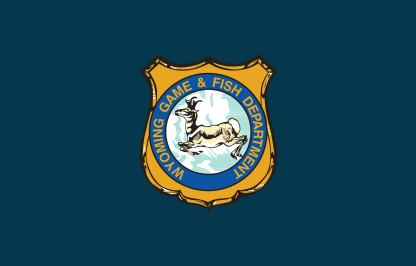Winter is when wildlife managers conduct most of their big game counts because animals are generally more concentrated and visible on their winter ranges. Counts are conducted from both the ground and the air. Managers not only count the total number of animals but also classify them as males, females and young of the year to help determine the trajectory of the population.
In general, local deer populations are still showing the effects of the devastating winter of 2016-17. The jury is still out on the impacts of this winter, but last winter was again tough on deer in some areas, notably among deer in the Sublette herd along the southern Wind River Range. However, animals that wintered on the east slope of the Wyoming Range tended to fare better last winter.
The 2020 deer hunting season proposals will likely remain similar to the past several years with the exception of the proposal to end the three point or better restriction on all bucks harvested. Antler point restrictions can temporarily increase total buck to doe ratios but do not increase the number or ratio of adult bucks in the population, and when used over a long period can actually reduce the number of adult bucks by placing all harvest pressure on that cohort. Antler point restrictions have been in place in Pinedale and Jackson region deer hunt areas for the recommended three consecutive years.
The impacts of last year’s winter on pronghorn pretty much mirror the effects seen on mule deer. The number of pronghorn in the Sublette Herd is below the desired population objective. Proposed hunt seasons for 2020 will likely be similar to last year.
Pinedale Region elk herds continue to do quite well, especially since harvest has been down the past several years. Managers are proposing similar bull elk hunting seasons in 2020 with the potential to liberalize cow elk harvest in some hunt areas where populations have increased.
The Sublette Moose Herd contiues to hover just below the opulation objective. A study conducted during 2011-2014 within a portion of this herd unit documented moose demographics, body condition, and survival rates to help managers better understand issues and problems within this moose population.Findings from this study indicate lower than expected adult female survival, fluctuating and low pregnancy rates, and high calf survival rates. Fat measurements from study animals indicated overall poor body condition, suggesting poor quality habitat. A combination of factors such as habitat conditions, disease, parasites, predation, etc. may all be attributed to limited population growth in this herd.
Wildlife managers continue to be concerned over declines in the Whiskey Basin Bighorn Sheep Herd. While most of the herd falls on the east side of the Wind River Range in the Lander Region, the Pinedale Region does manage a portion of the herd (Hunt Area 8) and has generally observed a stable to slightly decreasing population on the west side of the herd.
To learn more about the Pinedale Region big game surveys and proposed hunting seasons for 2020, plan to attend a public meeting scheduled for March 26 at the Pinedale Game and Fish office.
Big Game Winter Surveys Conducted
Mark Gocke, Public Information Specialist, 307-249-5811



